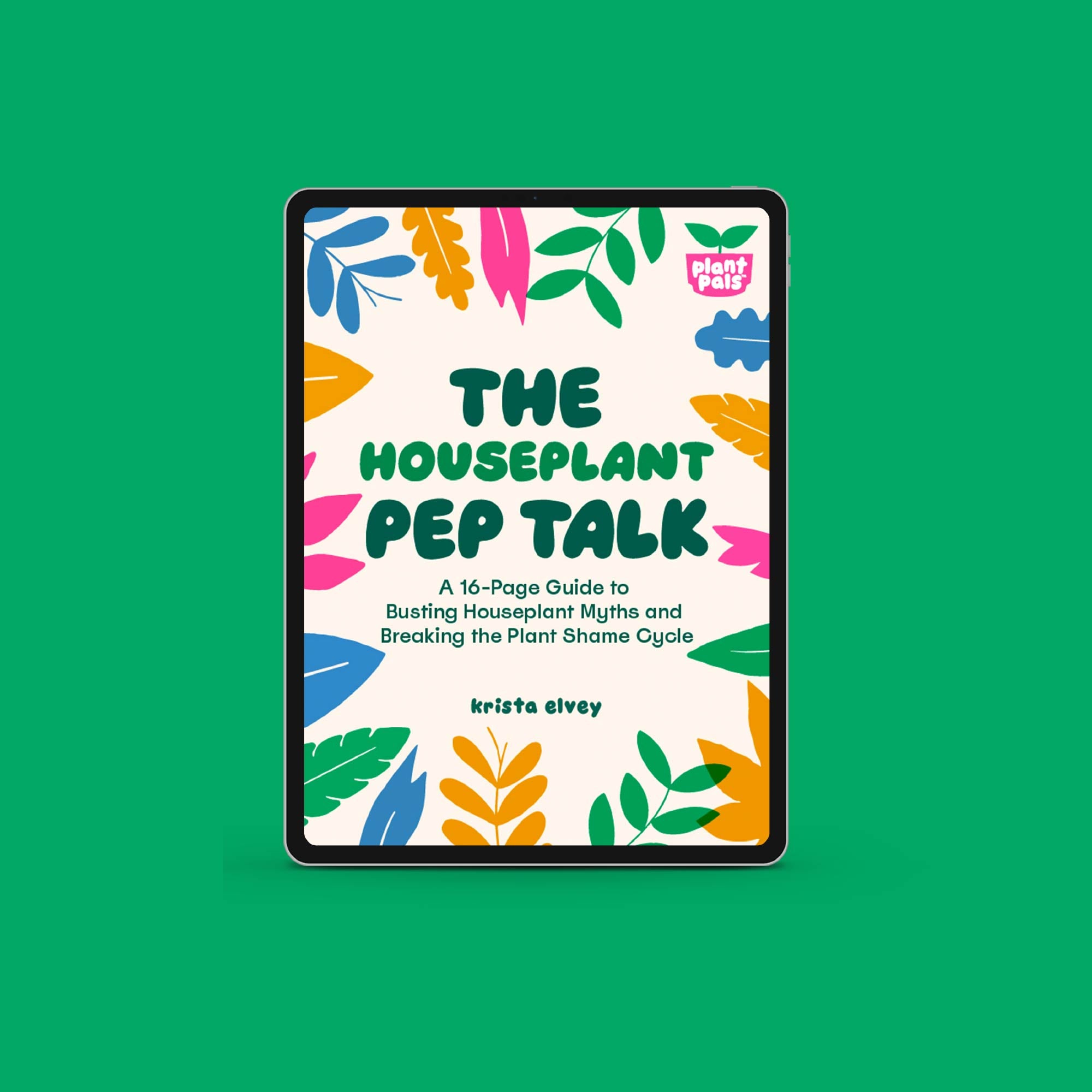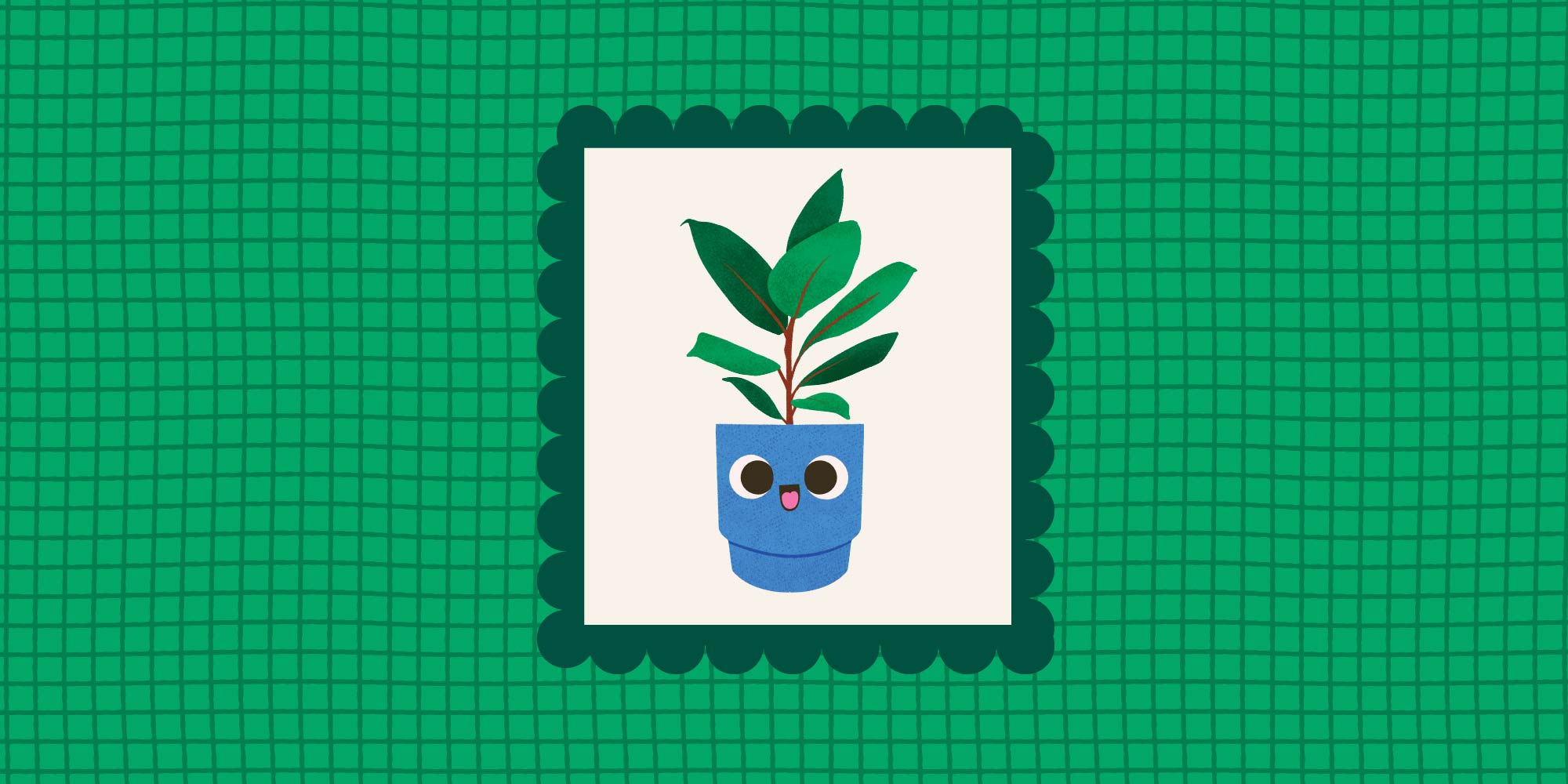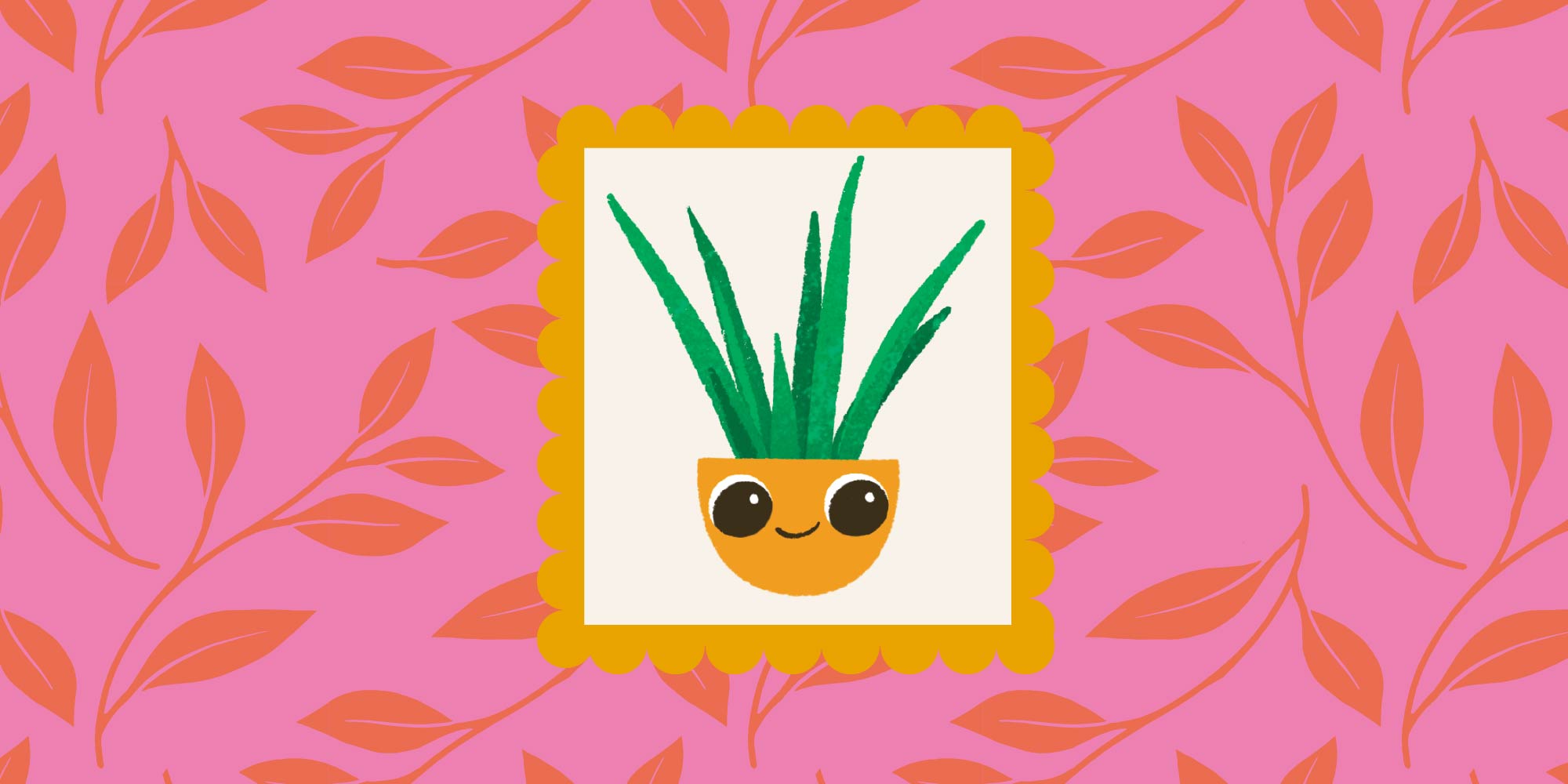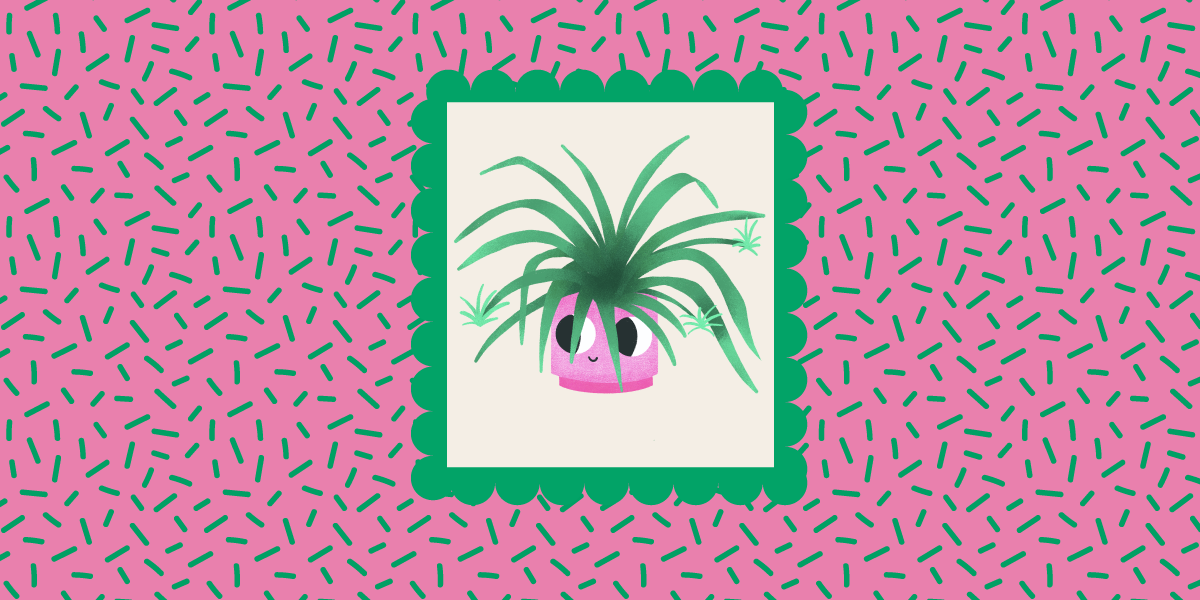My 5 Favorite Beginner Houseplants
The myth of the Low-Effort Houseplant is responsible for countless Plant People starting their plantcare journey, and it’s probably why so many of them give up on it and walk away.
If you’re told that something like a succulent or a cactus is “impossible to kill” and you kill it anyway, why wouldn’t you assume that plant care just isn’t for you? And that’s where the Plant Shame begins. As you can see, I take this personally.
Because there is no Easy Mode for houseplants, period. Every species has the same basic needs to survive, and you need to know that in order to succeed.
But there is a spectrum in overall experience and challenge. Some plants are more easygoing and forgiving when it comes to their comfort zones, and some react in a less severe manner when they’re out of their ideal range. That’s what makes them my personal favorite Beginner-Friendly Houseplants.
So let’s say you’ve mastered your Plant Shame and you’re ready to bring a Plant Pal into your life, but you don’t know where to start. You’re in the perfect place, and I’d be honored to share my thoughts on what Pal would be the best addition to your home!

Monstera
-
Scientific Name
Monstera deliciosa -
Also Goes By (Common Name)
Monstera, Swiss cheese plant, Split-leaf philodendron
- Looks Like
- Size: 6 to 10 feet (1.8 to 3 meters) tall indoors
- Shape: It has a vining growth habit with long aerial roots. These roots dangle in the air and can provide additional support to the plant.
- Leaf Type: Large, heart-shaped leaves with fenestrations, which are natural splits and holes in the leaves that create a "Swiss cheese" pattern.
- Coloration: Vibrant green leaves with lighter green fenestrations and veins.
-
Pet Friendly?
NO. Mildly toxic to pets. Keep away!
-
Why I Love Them
From their big, fan-like leaves to their presence in a room, I love Monsteras because they truly add life to my home and make me feel like a Plant Person. Despite being a tropical plant, they’re able to handle a variety of lighting situations and they don’t require frequent watering to be happy and healthy. Their big leaves provide the biggest emotional wins!
-
Why They’re A Great Beginner Plant Pal
Monsteras are flexible and forgiving within a wider range than most houseplants. They’re hardy enough to survive while you fine-tune the exact light and temperature levels they prefer. And once they’re in that sweet spot, they grow rapidly in a way that makes you feel like the World’s Greatest Plant Parent!

Snake Plant
-
Scientific Name
Sansevieria spp
-
Also Goes By (Common Name)
Snake Plant, Mother-in-laws Tongue
- Looks like:
- Size: Snake Plants vary in size, but they typically range from 1 to 4 feet (30 to 120 centimeters) in height.
- Shape: They have upright, sword-like leaves that grow in clusters, forming a rosette shape.
- Leaf Type: The leaves are long, stiff, and cylindrical, resembling the shape of a snake, hence the common name "Snake Plant."
- Coloration: Snake Plants come in various color variations, including dark green, light green, variegated patterns with yellow or white stripes, and even silver hues.
-
Pet Friendly?
NO. Mildly toxic to pets. Keep away!
-
Why I Love Them:
There are SO many cool species/varieties of Snake Plants (70+) and they all have different patterns, colors, and shapes. I love them because they seem almost other-wordly while also balancing some fun jungle vibes.
-
Why They’re A Great Beginner Plant Pal
Snake Plants truly set a high bar for houseplant resiliency. They are very tolerant to low light conditions, and even if you forget to water them for a long time, they’ll be right there waiting for you when you return. They can survive in low light, but move them to brighter spaces and watch new snake plant pups (yes, the actual term is “pups”) emerge from the soil!

Pothos
-
Scientific Name
Epipremnum aureum
-
Also Goes By (Common Name)
Pothos
- Looks like:
- Size: Pothos plants vary in size, but they typically grow to be several feet long when trailing or climbing.
- Shape: They have a trailing or climbing growth habit, with vines that can extend and drape elegantly.
- Leaf Type: Pothos leaves are heart-shaped, glossy, and have a smooth texture.
- Variegation (different colors or patterns, usually in the form of patches, streaks, or spots, on the leaf surface): Pothos plants often exhibit beautiful variegation, with leaves showcasing various combinations of green, yellow, and sometimes white patterns.
- Coloration: The overall color of Pothos leaves can range from deep green to lighter shades, depending on the specific variety.
-
Pet Friendly?
NO. Mildly toxic to pets. Keep away!
-
Why I Love Them
I love to propagate my Pals, and there is no easier or more rewarding houseplant to propagate than a Pothos. Many years ago, I started with my first pothos, and now they occupy pots in nearly every room of my house. Any time one of their vines gets a bit longer than you’d like, just snip it off, pop it in water, and in a few weeks you’ll have a new pothos ready to be potted up!
-
Why They’re A Great Beginner Plant Pal
Pothos are known for their lush foliage and trailing vines, making them a fun addition to any home. They are tolerant to a variety of light levels, so they will be patient with you as you get to know them and learn their preferences. Watching their vines grow is very rewarding, and they’ll give your home some exciting Jumanji vibes.

Peace Lily
-
Scientific Name
Spathiphyllum spp.
-
Also Goes By (Common Name)
Peace Lily, White Sails, Madonna Lily
- Looks like:
- Size: 1 to 4 feet (30 to 120 centimeters) tall.
- Shape: They have an upright growth habit with gracefully arching leaves that cascade slightly outward.
- Leaf Type: Peace Lily leaves are large, lance-shaped, and have a smooth texture.
- Flower: Peace Lilies are known for their distinctive white flowers.
- Coloration: The leaves of Peace Lilies are dark green, glossy, and often have prominent veining. The flowers are creamy white and visually striking against the deep green foliage.
-
Pet Friendly?
NO. Mildly toxic to pets. Keep away!
-
Why I Love Them
They are so much more than the Funeral Plant. I love them because who doesn’t want more flowers indoors? The plant is resilient, stately, and the contrast between the dark green leaves and white flowers is so pretty!
-
Why They’re A Great Beginner Plant Pal
Peace lilies are amazing because they will teach you how to care for them! When they are thirsty, they will very visibly wilt, letting you know it’s time to water them. Like our other beginners, they can tolerate some neglect as you learn to care for them. And, of course, extremely pretty flowers. Everyone wins!

Rubber Tree
-
Scientific Name
Ficus elastica
-
Also Goes By (Common Name)
Rubber Tree
- Looks like:
- Size: 6 to 10 feet (1.8 to 3 meters) or even taller when grown indoors as a houseplant.
- Shape: They have an upright and bushy growth habit, with a single or multiple trunks.
- Leaf Type: Large, leathery, and elliptical in shape, with a prominent central vein and a glossy texture.
- Variegation: Some varieties exhibit variegation, with leaves showcasing patterns of green, yellow, or white.
- Coloration: The leaves of Rubber Trees are typically deep green in color, giving them a rich and vibrant appearance.
-
Pet Friendly?
NO. Mildly toxic to pets. Keep away!
-
Why I Love Them
They are some of my favorite fast-growing Pals. I adore their big glossy leaves that make them look fancy and sophisticated. The first time I saw a rubber tree at a family member’s house, I was immediately drawn to it and went out to buy one immediately.
-
Why They’re A Great Beginner Plant Pal
A rubber tree will elevate the look of any room and make you look like a total Plant Pro. They are patient Pals so they will be able to tolerate some irregularities in their routine as you learn to care for them. And the reward for learning their preferences is big—literally! They will stretch as tall as your ceiling if you let them, so get ready for a growth spurt.
Roots aren’t grown in a day
No matter what your Plant Pals look like, you’re still building a relationship together. There are some things you’ll only learn after spending quality time together, just like any other friendship. So please view these basics as just the foundation for everything that comes afterwards!
And once you’re ready to dig deeper and keep growing, check out my Plant Pals Primer to get you 100% comfortable and confident in your ability to make your houseplants as happy as they can be!



